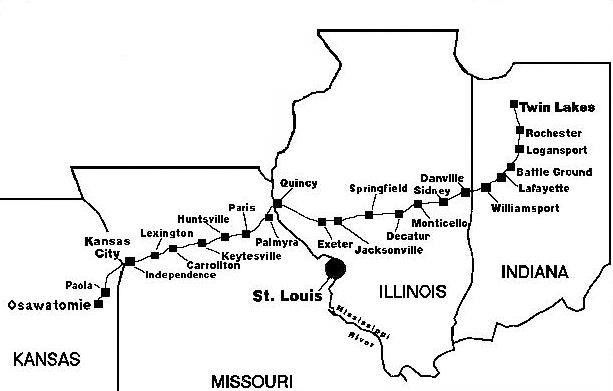News Release
PLYMOUTH —Every five years a Potawatomi Trail of Death Commemorative Caravan travels from Indiana to Kansas. This commemorates the forced removal of the Potawatomi, Chief Menominee’s band, from northern Indiana to Osawatomi, Kansas, which took place in the fall of 1838.
A huge statue of Chief Menominee is located on Peach Road south of Plymouth, about 15 miles north of Rochester.
When Indiana became a state in 1816, northern Indiana was still Potawatomi Territory. Indiana Governor David Wallace ordered the Hoosier Militia to round up all the Potawatomi within a radius of about 30 miles of Plymouth and march them to Western Territory, now named Kansas. This removal did not include the Miami, who were later removed in 1846. The Potawatomi were rounded up at Menominee’s village for three days and were marched down Rochester’s Main Street, on Sept. 5, 1838.
This Trail of Death festival was started in 1976 by the Fulton County Historical Society, Rochester, Indiana, president Shirley Willard, and a committee. The name was changed to Trail of Courage in 1977 at the suggestion of Indiana Gov. Otis Bowen, who was born in Fulton County. The name honors the courage of the Potawatomi on this 660-mile trek to Kansas on which 42 died.
The commemorative caravan re-enactment was started in 1988, the 100th anniversary of the 1838 removal, by Shirley Willard, then president of the FCHS, and George Godfrey, member of the Citizen Band Potawatomi, headquartered at Shawnee, Oklahoma.
Godfrey had ancestors on the Trail of Death. He was a professor at Haskell Indian Nations University and is now retired and living in Athens, Illinois. Godfrey is the emcee at the Indian dances at 1 p.m. both days at the Trail of Courage festival. Historic music and skits are produced in the arena at other times of the day.
Music and programs will be all day at the stage in the woods, named Chippeway Village stage. Chippeway was the name of the first white village in Fulton County. William Polke was the postmaster at Chippeway in 1832. Polke is considered the first white settler in Fulton County; settler meaning he bought land.
This year the Trail of Death Commemorative Caravan is being organized by Godfrey and Rich Meyers, Goshen, Indiana. Those going on the caravan will attend the Trail of Courage Living History Festival Sept. 16-17 at the Fulton County Historical Society, held at the museum four miles north of Rochester on U.S. 31. FCHS owns 35 acres a mile long beside the highway and Tippecanoe River. Those going on the caravan will meet at 7:30 p.m. Sunday night at the museum to sign up and discuss details.
Admission is charged at the Trail of Courage Living History Festival, which has two stages for period music and history stories and skits. The opening ceremony will be held at the stage in the woods with the raising of a period flag (27 stars) at 10 a.m. both Saturday and Sunday. Closing time is 4 p.m. Sunday.
Many re-enactors stay overnight around campfires. Over 100 camps, tents and teepees form a living history village during the festival.
Shirley is president emerita of Fulton County Historical Society. She was president for 30 years but retired in 2001. She has traveled the Trail of Death caravan every 5 years since 1988.





